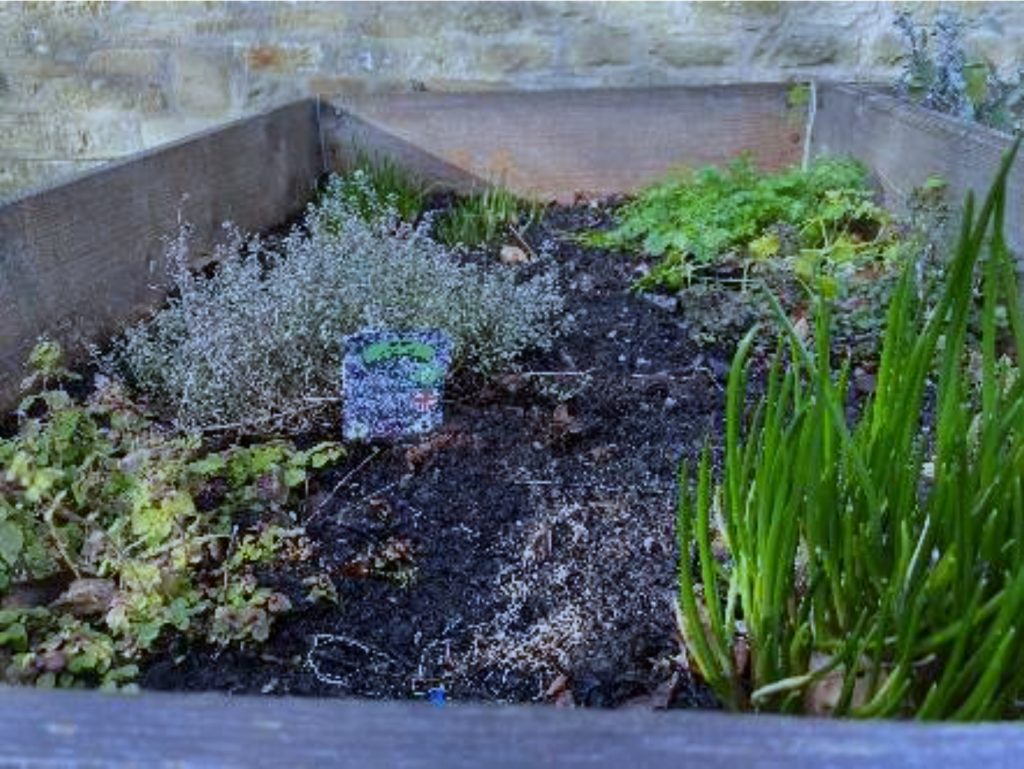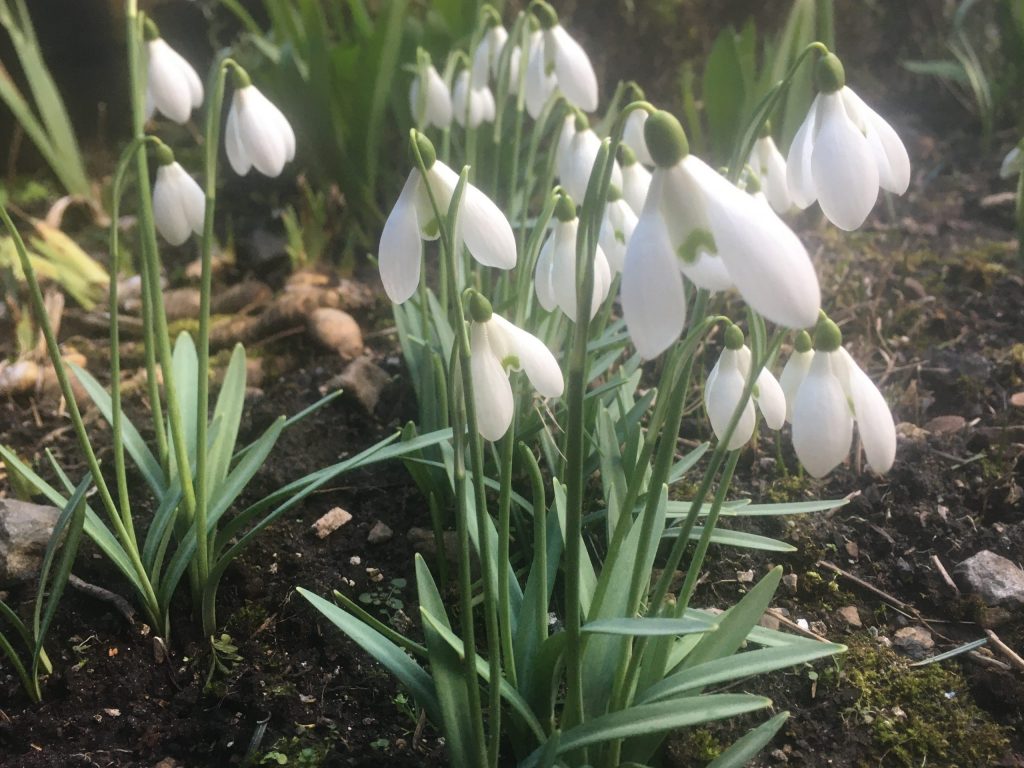
This winter we have been busy erecting a polytunnel to extend our growing season and to create protection for the more tender plants. We are also in process of creating more vegetable, fruit and herb beds. This is in the hope that we may be able to produce the vast majority of our own delicious organic fruit and veg with no food-miles and not a pesticide in sight. Where we can, we will use natural materials, biodegradable or recycled materials and try our best to work alongside nature.
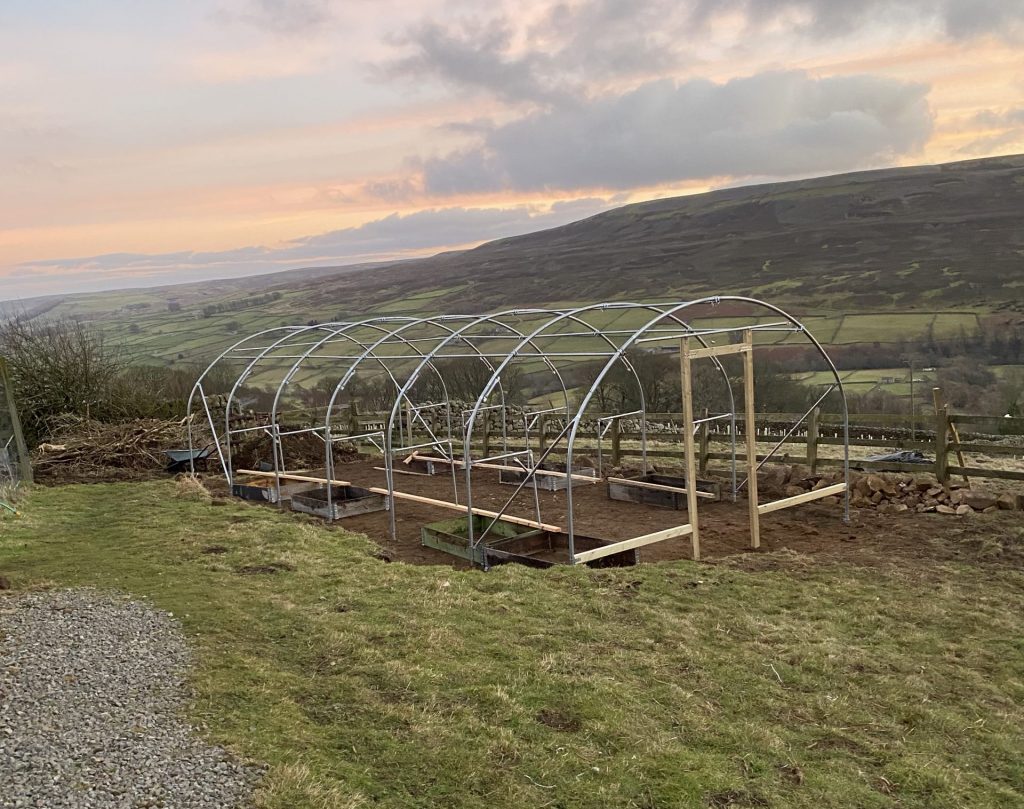
It is late February, and the metal structure of the tunnel is up but we await a calm few days to pull on the plastic. This first year will be a big learning curve to find out just what we can successfully grow in chilly Swaledale where the growing season is relatively short, and the wind can gust!
What we have already begun to grow:
Garlic:
Garlic is best planted in Autumn as the cloves tend to grow bigger with a couple of months of cold weather, but anytime up to April will do. We began planting in modules outside in February as our soil can be wet over winter, which garlic does not like.
We chose two varieties, quite different in flavour and care. Pink Germidour has a mild flavour and white paper-like skins that are streaked with pink. It is a softneck variety which does not produce an edible flower stem but has the advantage of storing well. It should be ready to harvest from May to July. It is the less hardy of our two varieties and will need protection outside from severe frost.
White Casablanca is, however, a vigorous growing variety yielding small, strong flavoured white bulbs, very suited to colder conditions. It is a hardneck variety which does produce the edible flower stem for use in salads but is not so good at storing. Garlic doesn’t need a large space to grow so you can plant in pots.
It will be interesting to see how they both fare and I will keep you updated.
Onions:
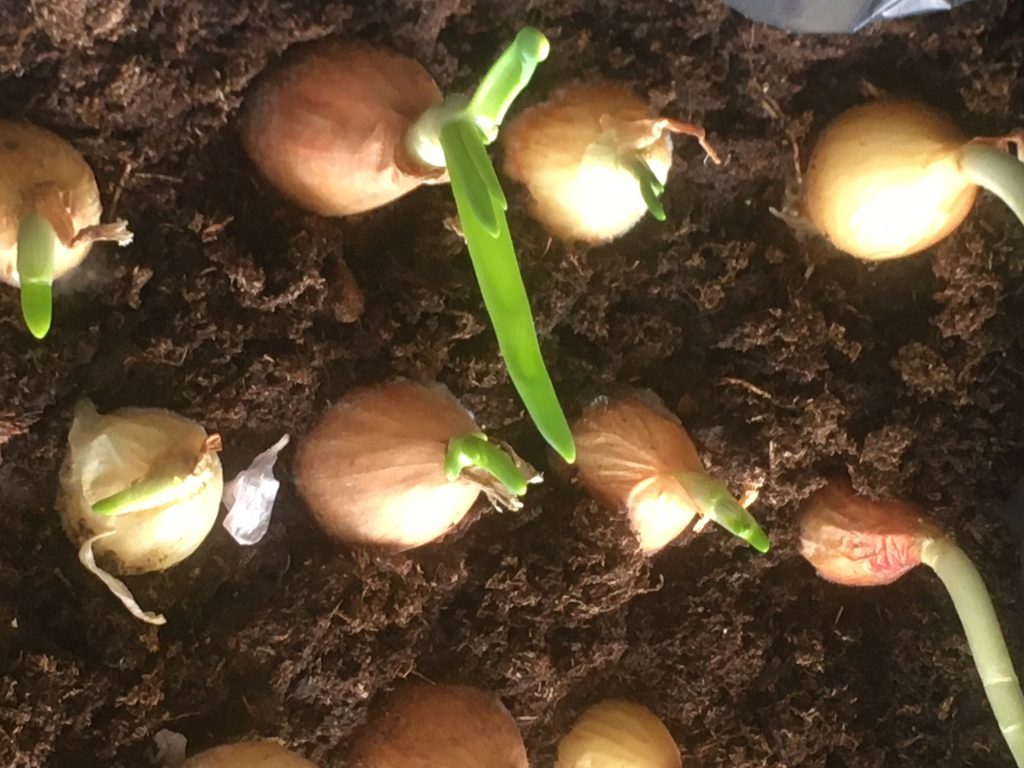
As we are still creating new vegetable beds, our onion sets, which ideally should have been planted in the autumn, have also been begun in large trays indoors. We hope this will compensate for planting late by giving them the head start they would have had.
We are trialling two white onions Radar and Senshyu. Radar is mild flavoured and will store well and Senshyu is renowned for being deliciously crisp. We have Electric as our red onion which is known for its excellent flavour and shiny red skins.
Tomatoes, chillis, peas and beans:
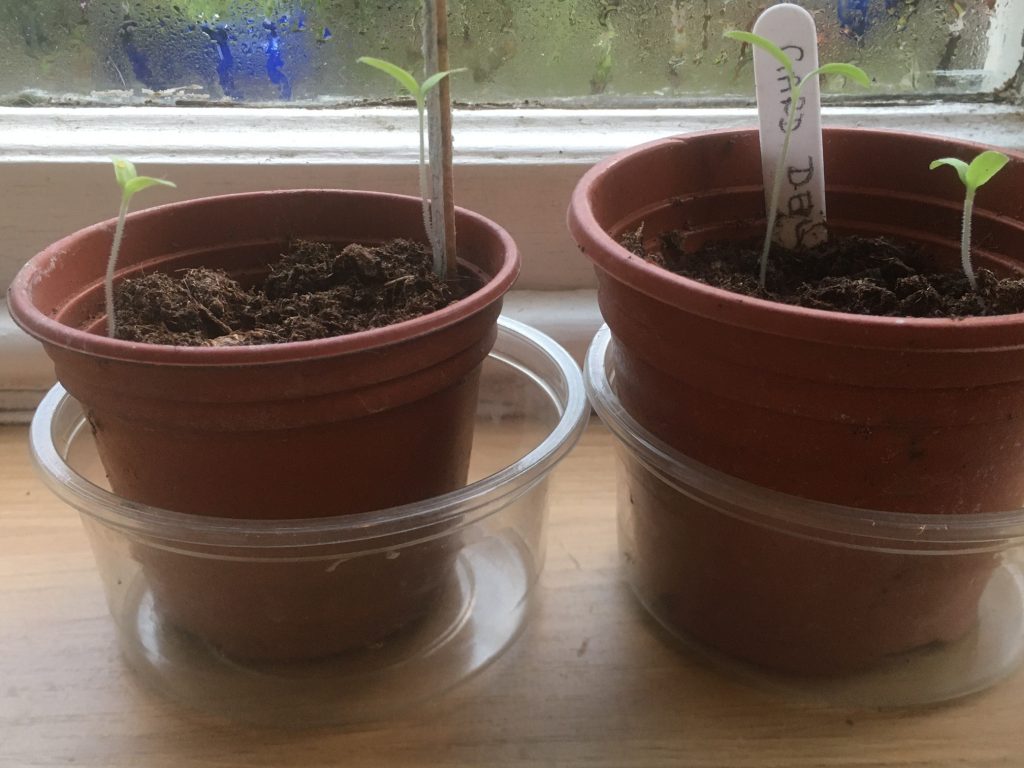
Tomatoes and chilli seeds can be started indoors, all throughout March, in peat-free compost and placed either on a warm sunny windowsill with a clear recycled plastic bag over each pot to increase humidity, or in the propagator – as they germinate best at 21 °C. We have been using plastic pots we already had, but also cardboard toilet rolls, kitchen paper tubes cut in half and used coffee cups which you can now collect from the Dales Bike Centre.
Peas, beans and sweet peas love a long root run which these all provide and of course the pots can be planted directly into the ground which will prevent root disturbance.
Looking ahead
Round peas (as they cope better than wrinkled peas with low light levels) can be started off in modules in March. Aubergines can be started off on a warm window-ledge or in a propagator.
Which seed?
We are using ‘The Real Seed Company’ which sell heirloom and heritage seeds. The yield is better over long periods, the seed is more adaptable to different soils, each year you can collect your own seed and the produce is arguably tastier.
We have made our first batches of plant labels from bits of wood we had, sturdy enough to withstand Swaledale wind speeds, and have cut up hazel branches ready to have their bark whittled off at one end with a sharp knife to create a flat surface for writing on.
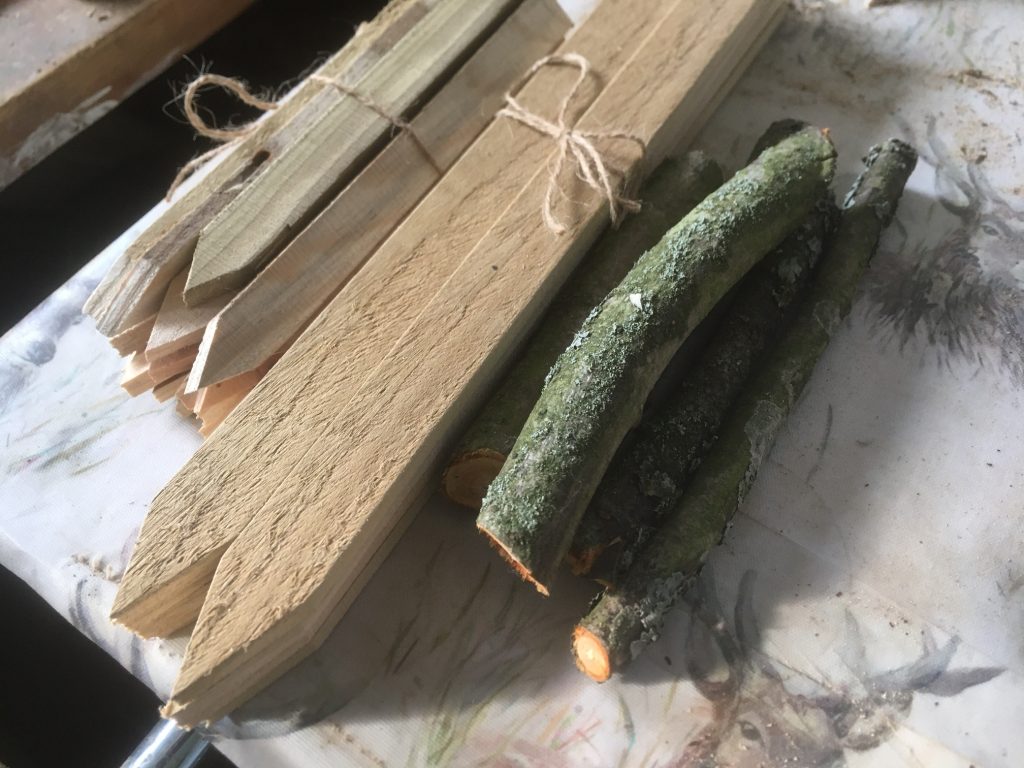
The Incredible Edible Community vegetable patch at Reeth
The raised beds have increased in number this year and the herbs have begun to show fresh new shoots.
